Do dips Work the Chest and Triceps? The TRUTH is revealed!
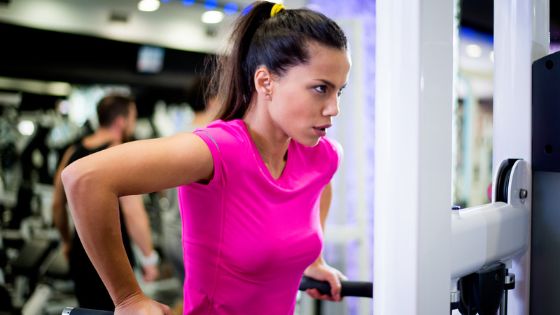
Do dips work the chest and triceps? Absolutely! When you perform dips, it works your triceps, pectoralis, and anterior deltoid directly. Undoubtedly, this exercise is one of the most effective ways to build muscle in your upper body swiftly.
Do you want to know more about this fantastic exercise? Then, read on to learn how to perform dips correctly and their benefits.
What muscles do dips workout?
What do dips do? Dips are a popular bodyweight exercise to tone and strengthen the upper body. They are known for working the triceps, pectoralis, and anterior deltoid muscles.
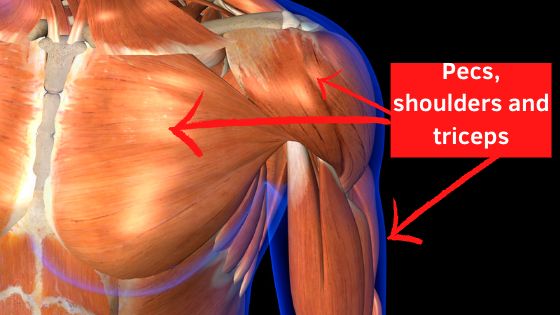
The triceps are the primary muscle group used when performing dips because they are responsible for straightening your elbows. The other two primary muscle groups involved in dips include the pectoralis and anterior deltoid muscles.
In addition, the pectoralis helps push an object away from the body (as used in dips) and bring it closer to the body (as used in chest exercises).
Meanwhile, the anterior deltoid is one of three shoulder muscles that help with shoulder extension - another way of describing how you move when you perform a dip.
With all three muscles working together, dips can help increase upper-body strength and tone specific areas of your back, chest, and arms.
Smaller muscle groups
Although dips primarily target these major muscle groups, other smaller muscle groups will also benefit from this exercise due to its compound nature. These include:
- Serratus anterior (muscles along the outside of the rib cage)
- Levator scapulae (the muscle between the neck and shoulder blade)
- Infraspinatus/teres minor (small rotator cuff muscles)
- Biceps brachii (front of arm muscle).
Overall, dips provide an effective way of training multiple muscle groups at once without having to use any additional weights or machines.
Do dips work shoulders?
Yes, dips can be effective for targeting the shoulders. The anterior deltoid, one of three shoulder muscles that help with shoulder extension, is a primary muscle group used when performing dips. As you move through the dip movement, your anterior deltoids work to pull your body up and down in between straightened arms.
Ultimately, doing dips regularly can help strengthen your shoulders and increase flexibility in these joints. This exercise could also benefit smaller muscles around the shoulder area, such as the levator scapulae and infraspinatus/teres minor.
Do dips work the triceps?
Yes, they do. The key to maximizing your triceps exercise with dips is keeping your elbows firmly against your body while performing the up and down movements.
The triceps consist of three muscles responsible for straightening the elbow joint and pushing an object away from the body. This muscle group is used during dips to lift your body up and down between straightened arms.
Regularly performing dips could help strengthen and tone your triceps and other surrounding muscles, such as the pectoralis, anterior deltoid, serratus anterior, levator scapulae, and biceps brachii.
Dips can be a great addition to any workout routine if you want to build upper-body strength while toning multiple muscle groups. Doing them correctly with proper form can avoid any potential injury or discomfort while seeing.
Do dips work back?
Although dips recruit the back muscles, they are not meant to target that area directly. Instead, dips focus on primarily working the chest and triceps while using the stabilizing properties of your back muscles to aid in performing them.
Thus, although you may feel a slight engagement in your back region during this exercise, it mainly comes from its role as an accessory muscle group rather than being targeted.
How to do dips
- When performing dips, begin by holding yourself up with straight arms, slightly bent elbows, and your hands gripping parallel bars.
- Keep your back as close to vertical as possible while lowering your body at a slow speed until your upper arms are parallel with the floor.
- Push yourself back up to the starting position and repeat.
It's essential to keep your elbows close to your body throughout the exercise to ensure correct form and avoid injuries. Additionally, ensure you have a spotter nearby for safety or use a dipping belt for extra support.
How to do dips to workout your chest
If your goal with the dips exercise is to train and congest your pectorals, you should perform the exercise with your elbows slightly outward, away from your body. In addition, in the downward movement, you should reach as low as possible, thus emphasizing the chest more.
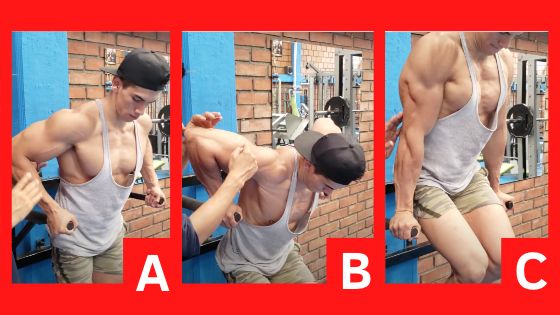
How to perform dips to workout your triceps
If your objective is to train your triceps, you should keep your elbows close to your body during the downward and upward movement. Contrary to chest training, when doing dips to work your triceps, it is unnecessary to lower your elbows too much in the downward motion.
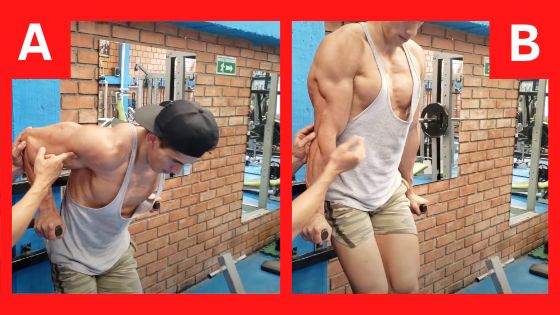
How to do bench dips
Bench dips are a slightly modified version of the standard dip exercise, utilizing a flat surface instead of two parallel bars.
- To perform bench dips, start sitting on the edge of a bench or other flat surface with your hands placed shoulder-width apart behind your back. Lift yourself off the bench and hold yourself up in this position.
- Lower your body slowly as you bend your elbows until they reach an angle lower than 90 degrees, and then push yourself back up to the starting position towards the bench.
- Repeat this movement for an effective triceps workout using lighter weights or no extra weight.
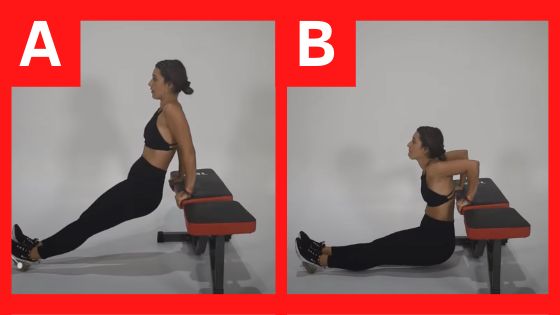
The Benefits of Dips
When done correctly, dips can offer injury prevention, strength, and aesthetic benefits:
- Strength: Dips strengthen several muscles at once, making them an effective compound exercise for improving upper-body strength compared with isolation exercises such as bicep curls.
- Aesthetics: Regularly performing dips can help build greater muscle mass in the chest, triceps, and shoulders, which helps develop more defined arms and broader-looking chests.
- Injury Prevention: Dips can also help reduce the risk of shoulder injuries by strengthening muscles and tendons that stabilize the shoulder joint.
Dips are incredibly effective for improving upper body strength, muscle mass, and injury prevention. However, performing this exercise correctly is essential to benefit you most. With a bit of practice and dedication, dips will help you reach your fitness goals!
Mistakes to avoid while performing dips
Finally, look at individuals' most common errors when performing dips.
Not going low enough or lowering too much.
One of the most frequent errors is when the training chest is not going low enough. This means you're neglecting to get a full range of motion and don't entirely activate the chest. To avoid this, ensure that you lower your body until your upper arm reaches or goes below parallel.
Over lowering when we want to focus on triceps training is another common mistake. We should keep the elbows close to the body and not lower excessively (90º). Instead, we would focus the activity on the pectoral muscle when lowering too much.
Swinging the body
People tend to make the misstep of swaying their bodies during dips. This undermines concentration on your chest and triceps and places unnecessary pressure on your shoulder joint.
The key is maintaining a controlled stillness throughout the exercise for the best results.
Rounded shoulders
Many people make the error of allowing their shoulders to curl forward, putting extra tension on their shoulder joint and potentially resulting in injury. To avoid this issue, keep your shoulders back and down during the exercise for maximum protection.
Final words
Dips are an excellent exercise for building upper body strength and enhancing aesthetics. They can simultaneously target your chest, triceps, or both muscles with the proper form. However, performing dips incorrectly can lead to injury, so paying attention to technique and ensuring that you're using the appropriate form while doing this exercise is essential.
Nevertheless, you can safely perform dips to reach your fitness goals with practice and dedication.
Remember. It's always a good idea to have a spotter nearby for safety or use a dipping belt for extra support. Have fun, and stay safe!
DISCLAIMER: buildyourbody.org does not provide medical advice, examination, or diagnosis.
Medically reviewed and approved by Nataniel Josue M D.
